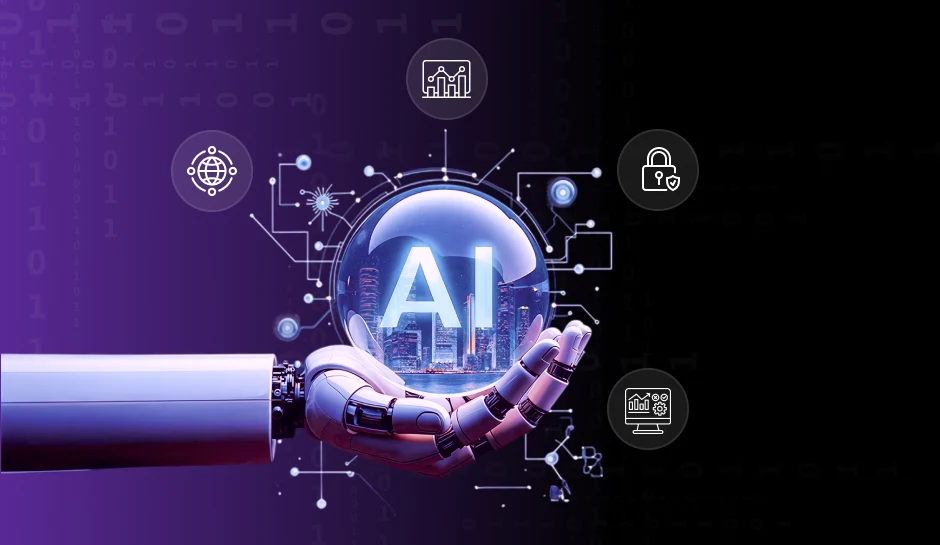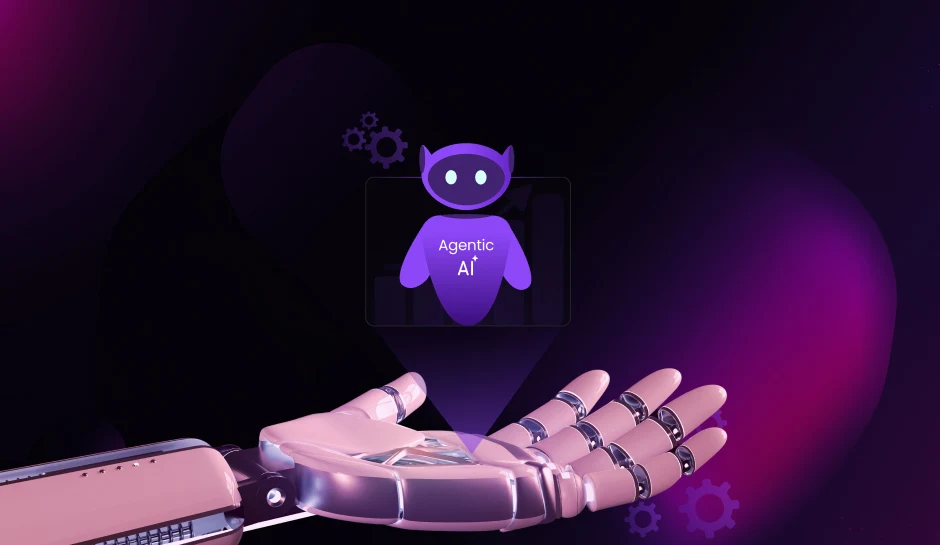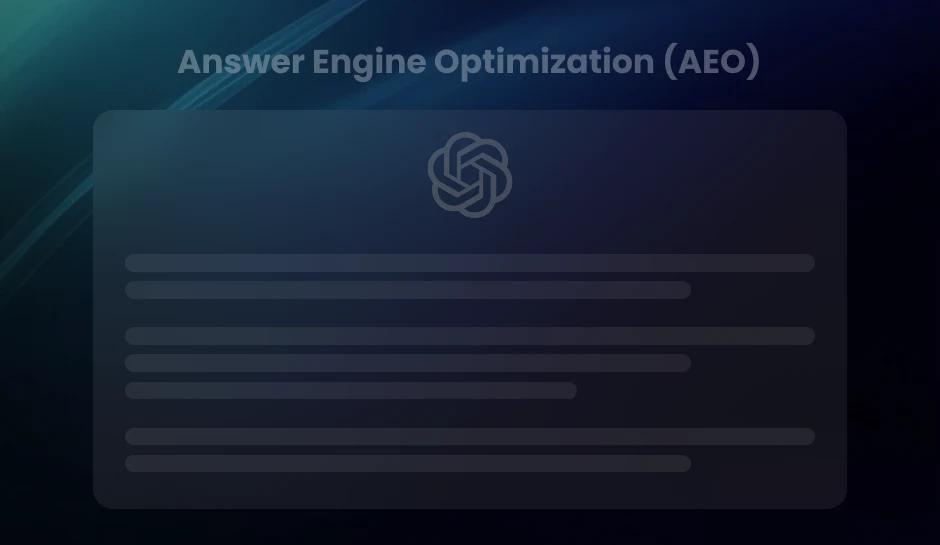
AI in Account-Based Marketing: The Competitive Edge No One Is Talking About
AI is reshaping Account-Based Marketing (ABM), enabling businesses to refine their targeting, create tailored content, and predict buyer behavior. With AI, companies can increase the efficiency of their ABM strategy, drive more conversions, and stay ahead of the competition. Read on.
What if you could predict, with high accuracy, which accounts are most likely to convert—and reach them with perfectly tailored messaging before your competitors even realize they’re interested? Sounds like a dream, right?
Yet, most businesses still rely on outdated methods to target accounts—spending countless hours manually sifting through data, creating generic content, and hoping their efforts hit the mark. The problem? This approach is inefficient, costly, and often misses the mark.
Enter AI in account-based marketing—the competitive edge no one is discussing. While most companies continue with conventional ABM tactics, AI quietly transforms how high-performing companies approach their marketing strategy. With AI, businesses can move from guesswork to predictive precision, automatically identifying high-value accounts, personalizing outreach at scale, and ensuring their efforts are always in alignment with the best opportunities.
This isn’t just about improving efficiency; it’s about leaving your competitors in the dust by making smarter, data-driven decisions that accelerate revenue and optimize every touchpoint in the buyer’s journey.
You are already behind if you’re not leveraging AI in your ABM strategy yet. Let’s explore how integrating AI into your approach can give you the competitive edge you’ve been missing.
Understanding AI and Generative AI
AI is no longer just a futuristic concept—it is actively reshaping industries, including marketing. To understand its impact on Account-Based Marketing (ABM), it is important to distinguish between Artificial Intelligence (AI) and Generative AI and how both play a role in modern marketing strategies.
What is AI?
Artificial Intelligence refers to machine-driven processes that analyze data, identify patterns, and make intelligent decisions with minimal human intervention. In marketing, AI is used for predictive analytics, automation, personalization, and customer engagement. It helps marketers target the right accounts, anticipate customer needs, and streamline operations.
What is Generative AI?
Generative AI is a subset of AI that goes beyond analysis—it creates new content. Unlike traditional AI, which processes and interprets data, Generative AI produces text, images, audio, and even video based on input data. Tools like OpenAI’s ChatGPT and Google’s Gemini are prime examples of how Generative AI is being used to craft highly personalized marketing messages, generate content at scale, and enhance customer interactions.
What Is Account-Based Marketing (ABM)?
Account-Based Marketing (ABM) is a highly targeted B2B marketing strategy focusing on engaging high-value accounts rather than casting a wide net. Unlike traditional marketing, which targets a broad audience, ABM aligns marketing and sales efforts to create personalized campaigns for key accounts with the highest revenue potential.
Key Principles of ABM
- Account Selection:
- Personalization at Scale:
- Multi-Channel Engagement:
- Marketing & Sales Alignment:
- Data-Driven Decision Making:
Identifying and prioritizing the most valuable accounts based on data-driven insights.
Crafting tailored messages, content, and engagement strategies for each account.
Using a mix of email, social media, paid ads, and direct outreach to create a cohesive experience.
Ensuring both teams collaborate to nurture and convert high-value accounts.
Leveraging insights from customer data to optimize marketing efforts and improve conversion rates.
How ABM Differs from Traditional Marketing
| Feature | Traditional Marketing | Account-Based Marketing (ABM) |
| Target Audience | Broad market segment | Specific high-value accounts |
| Approach | Mass marketing | Highly personalized strategies |
| Lead Generation | Focus on quantity | Focus on quality & intent |
| Collaboration | Marketing-led | Sales & marketing alignment |
| Content Strategy | Generalized content | Tailored content for each account |
AI in ABM: The Game-Changer
Account-Based Marketing (ABM) thrives on precision—identifying the right accounts, understanding their needs, and delivering highly relevant messaging. However, manually analyzing data, segmenting accounts, and personalizing outreach is time-consuming and inefficient. AI eliminates these limitations by automating complex tasks, uncovering deep insights, and scaling personalization without sacrificing accuracy.
1. Smarter Account Selection with Predictive Analytics
AI-driven predictive analytics can analyze vast amounts of data, including:
- Past interactions, website behavior, and engagement history
- Purchase intent signals from third-party sources
- Firmographics, such as company size, revenue, and industry trends
These insights help marketers prioritize high-value accounts that are more likely to convert, optimize resource allocation, and increase campaign effectiveness.
2. Hyper-Personalization at Scale
Traditional ABM relies on manual customization, but AI enables personalization at scale by:
- Generating tailored email content based on an account’s pain points
- Adjusting ad creatives dynamically based on a prospect’s behavior
- Crafting website experiences that adapt in real-time for each visitor
With Natural Language Processing (NLP) and Generative AI, brands can automate personalized messaging while maintaining relevance and engagement.
3. AI-Powered Lead Scoring & Qualification
AI-driven lead scoring eliminates the guesswork in sales prioritization. Instead of relying on static criteria, AI evaluates leads based on:
- Engagement levels (e.g., email opens, content downloads, time spent on the website)
- Buying intent signals (e.g., product searches, competitor comparisons)
- Historical conversion data from similar accounts
This ensures that sales teams focus on accounts with the highest likelihood of conversion, improving efficiency and success rates.
4. AI-Driven Content Generation for ABM
Generative AI tools like ChatGPT and Jasper can create:
- Personalized email sequences tailored to an account’s industry and needs
- AI-written blog posts, whitepapers, and case studies targeting specific decision-makers
- Automated LinkedIn messages that align with a prospect’s recent activity
This allows businesses to produce high-quality, relevant content at scale, ensuring consistent and timely engagement with key accounts.
5. Automated Multi-Channel Engagement
AI optimizes outreach by integrating multiple touchpoints, ensuring seamless communication across:
- Email campaigns:
- Paid advertising:
- Chatbots & conversational AI:
AI automates follow-ups and A/B tests subject lines to improve open rates.
AI dynamically adjusts ad targeting based on real-time engagement signals.
AI-powered assistants respond instantly to customer inquiries and nurture leads 24/7.
By leveraging AI across these channels, businesses can maintain continuous, personalized engagement without overwhelming their sales and marketing teams.
6. Real-Time Insights & Campaign Optimization
AI does not just execute ABM strategies—it continuously learns and improves them by:
- Analyzing campaign performance to identify what is working and what needs adjustment
- Providing predictive insights on future customer behavior
- Recommending optimizations to maximize conversions and ROI
This real-time adaptability ensures that ABM campaigns remain data-driven and responsive to market shifts.
Key AI Technologies Powering ABM
Incorporating AI into your Account-Based Marketing strategy is only as powerful as the technologies you leverage. Several key AI technologies are transforming ABM by providing deeper insights, enhancing personalization, and streamlining engagement at scale.
Predictive Analytics
Predictive analytics is one of the most crucial AI tools in ABM. AI can forecast which accounts are most likely to convert by analyzing historical data and tracking account behaviors. This process involves:
- Assessing past interactions with your content, emails, and sales calls.
- Analyzing patterns in account behavior, such as website visits, content engagement, and response to outreach.
- Scoring accounts based on the likelihood to convert, allowing your marketing and sales teams to prioritize high-value opportunities.
Natural Language Processing (NLP) and Generative AI
NLP and Generative AI are at the forefront of content creation in ABM. These technologies use AI’s ability to process and understand human language to create highly personalized messaging at scale.
- NLP allows AI systems to analyze the tone, sentiment, and context of text, making it possible to craft emails, ads, and landing pages that speak directly to the needs and interests of a target account.
- Generative AI can produce tailored content automatically—whether it’s a personalized email subject line, custom ad copy, or a landing page that matches the exact interests of an account, all based on behavioral data.
Machine Learning
Machine learning is the backbone of AI-driven optimization. As AI continuously gathers data from interactions and campaigns, it learns and refines its targeting, messaging, and engagement approach.
- Real-Time Adaptation:
- Improving Targeting:
Machine learning algorithms analyze live data from every interaction and adjust strategies instantly. For instance, if an account engages with specific content, machine learning can optimize follow-up messaging to align with that behavior.
Machine learning helps refine account scoring, improving targeting precision. Over time, it enhances the ability to predict which accounts will likely engage and convert based on continuous learning from previous results.
Intent Data
Intent data is a critical technology that identifies accounts actively considering a purchase. AI analyzes various signals from an account’s behavior—such as search queries, content consumption, and interactions with ads—to detect intent.
- Behavioral Signals:
- Prioritizing Accounts:
AI tools track when an account searches for specific keywords, reads relevant blog posts, downloads eBooks, or watches product videos. These actions provide clear indications of intent.
With intent data, businesses can see which accounts are closer to purchasing, allowing them to tailor messaging and outreach accordingly. By aligning content and engagement based on intent signals, businesses can increase the chances of conversion.
Case Study: How DiGGrowth Helped a Software Company Transform ABM with AI
The Challenge
A growing software company faced challenges in scaling their Account-Based Marketing (ABM) efforts. Their traditional methods lacked personalization at scale and efficient account targeting, leading to slow growth and missed opportunities.
The Solution
DiGGrowth partnered with the company to integrate AI-powered tools into their ABM strategy. Key steps included:
- Predictive Analytics:
- Intent Data:
- Personalized Content Creation:
DiGGrowth implemented AI-driven lead scoring, allowing the software company to prioritize high-value accounts with a higher likelihood of conversion.
By leveraging AI to track behavioral signals, the company was able to identify accounts showing strong buying intent.
DiGGrowth used Generative AI to automate and personalize emails, landing pages, and ads at scale, ensuring messages resonated with individual accounts.
The Results
- 20% Increase in Conversion Rates:
- 30% Reduction in Manual Effort:
- 25% Shortened Sales Cycle:
Focused outreach to high-potential accounts boosted conversion rates significantly.
AI-driven automation allowed the marketing team to scale personalization without additional resources.
Real-time AI insights enabled sales teams to act on intent signals, accelerating decision-making.
Key Takeaway
By working with DiGGrowth, the software company successfully transformed its ABM strategy using AI. The results proved that AI in ABM is a game-changer, enhancing targeting, content personalization, and efficiency—making it a critical component for long-term growth.
How to Integrate AI into Your ABM Strategy: A Step-by-Step Approach
Integrating AI into your Account-Based Marketing (ABM) strategy can seem daunting, but following a structured approach can unlock its full potential. Here’s a step-by-step guide to help you seamlessly incorporate AI into your existing ABM strategy, ensuring that you enhance targeting, personalization, and overall campaign efficiency.
Assess Your Current ABM Setup and Identify Areas for AI Enhancement
The first step in integrating AI into your ABM strategy is to evaluate your current ABM processes. Identify areas where AI can add value, whether by improving precision, automating repetitive tasks, or enhancing personalization. Focus on these key areas:
- Account Targeting:
- Personalization:
- Predictive Analytics:
AI can enhance how you identify and prioritize high-value accounts. Predictive analytics and machine learning could benefit your current targeting methods.
Consider whether you can deliver personalized content and messaging at scale. AI-powered tools can automate content creation, such as emails, landing pages, and ads, tailored to individual accounts.
Examine your ability to anticipate which accounts will most likely convert. Predictive lead scoring powered by AI can give you more accurate forecasts and better lead prioritization.
Choose the Right AI Tools for Your ABM Needs
Once you have identified areas for improvement, the next step is to select the right AI tools that align with your ABM goals. The right tools can help you streamline operations, improve efficiency, and enhance customer experience. Here are some AI-driven tools you should consider:
- Predictive Lead Scoring:
- AI-Powered Email Marketing Platforms:
- Intent Data Aggregators:
Leverage AI to score leads based on historical data, past interactions, and buying signals. Tools like DiGGrowth or HubSpot’s AI features can help you identify and prioritize high-potential accounts.
Use platforms like Mailchimp or Persado that utilize AI to craft and send personalized emails at scale. AI can optimize subject lines, messaging, and send times based on account behavior and preferences.
Platforms like Bombora or Demandbase gather intent signals from accounts across the web. By analyzing search behaviors, content consumption, and other intent data, AI can identify accounts that are actively considering a purchase, allowing your team to engage them at the right time.
Train Your Teams on Using AI-Generated Insights Effectively
AI can deliver powerful insights, but for it to have a real impact, your teams need to know how to use it. Ensure that both your marketing and sales teams are trained on interpreting AI-generated insights and leveraging them in their daily workflows:
- Marketing Teams:
- Sales Teams:
Train your marketing team to interpret insights from predictive analytics, AI-powered content personalization, and intent data. These insights will help marketers create more relevant content and more targeted outreach for each account.
Sales teams must be equipped to act on the real-time insights AI provides. Intent signals, for example, should prompt timely outreach. Train your sales reps to adjust their pitch based on AI-driven account scoring, optimizing their efforts for maximum engagement.
Test, Monitor, and Optimize AI-Driven Campaigns Regularly for Continuous Improvement
After integrating AI into your ABM strategy, it’s crucial to test, monitor, and optimize your campaigns on an ongoing basis. AI tools are constantly evolving, and your strategy should evolve with them to maximize results. Here’s how you can do it:
- A/B Testing:
- Monitor Campaigns:
- Continuous Learning:
Run tests to measure the effectiveness of AI-powered content, such as personalized emails or landing pages. Use the results to adjust your strategy and improve engagement rates.
Use real-time AI analytics to track the performance of your campaigns. Look for patterns in account engagement, conversion rates, and sales cycle length, and adjust tactics accordingly.
AI improves over time by learning from data. As your campaigns generate more interaction and feedback, AI will refine its models, leading to better-targeted outreach, more personalized content, and improved lead scoring.
Key Takeaways
- AI in ABM is more than just a tool; it’s a competitive advantage that enables businesses to predict, identify, and engage high-value accounts before competitors even realize their potential.
- AI enhances ABM by automating data analysis, generating personalized content, and continuously optimizing campaigns for more efficient targeting and engagement.
- Combining AI-driven technologies like predictive analytics, NLP, and machine learning allows businesses to prioritize accounts with high conversion potential, increasing overall ROI.
- AI can automate tedious tasks, such as lead scoring and content creation, freeing resources for more strategic, high-impact efforts.
- As AI-powered ABM becomes increasingly essential for success, businesses that do not adopt this approach risk falling behind in an ever-evolving market landscape.
Conclusion
With AI, businesses can scale personalization, predict account behavior, and make data-driven decisions that lead to more successful campaigns. Implementing AI in ABM streamlines processes and positions you ahead of the competition by identifying the right accounts and optimizing engagement with them. As the market evolves, leveraging AI in your ABM strategy isn’t just beneficial—it’s critical for staying ahead and driving growth.
Ready to get started?
Increase your marketing ROI by 30% with custom dashboards & reports that present a clear picture of marketing effectiveness
Start Free Trial
Experience Premium Marketing Analytics At Budget-Friendly Pricing.

Learn how you can accurately measure return on marketing investment.
Additional Resources
Don’t Let AI Break Your Brand: What Every CMO Should Know
AI isn’t just another marketing tool. It’s changing...
Read full post postFrom Demos to Deployment: Why MCP Is the Foundation of Agentic AI
A quiet revolution is unfolding in AI. And...
Read full post postAnswer Engine Optimization (AEO): The New Frontier of SEO in 2025
As digital experiences continue to evolve, so does...
Read full post postFAQ's
AI streamlines account targeting, personalizes content at scale, and automates repetitive tasks. This reduces manual effort, enabling teams to focus on strategy while improving campaign outcomes and resource allocation for higher engagement and conversion.
AI enhances ABM strategies but does not replace human creativity and decision-making. It automates processes, analyzes data, and optimizes outreach, allowing marketers to make more informed decisions and refine insights-based strategies.
No, AI-driven ABM tools are scalable and can benefit businesses of all sizes. Small and mid-sized companies can use AI to enhance targeting, streamline processes, and improve personalization without significant resource investments.
Over-reliance on AI without human oversight can lead to missed nuances in customer behavior. Balancing AI’s efficiency with human expertise is crucial to ensure alignment with company values and customer needs.
Results can vary, but typically, businesses start seeing improvements within 3-6 months. AI needs time to analyze data, adjust targeting, and optimize campaigns, but with continuous monitoring, results will become increasingly impactful over time.
 Rahul Sachdeva
Rahul Sachdeva  Arpit Srivastava
Arpit Srivastava 

